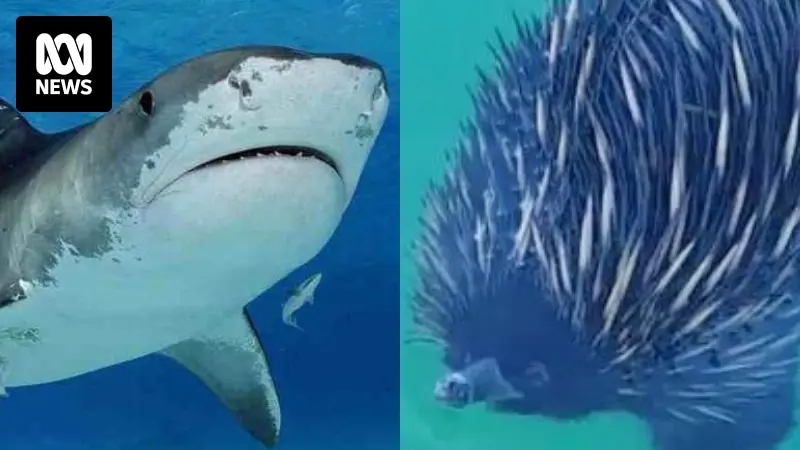A scientist who witnessed a tiger shark vomiting up an echidna during the course of a three-year project off the Queensland coast says it was a “one in a million” sight.
James Cook University marine biologist Nicolas Lubitz shared the story ahead of the release of project data later this year.
He said tiger sharks were scavengers and had been known to eat seabirds, tyres, licence plates and even a small TV screen.
But Dr Lubitz said watching a shark throw up a dead echidna near Orpheus Island, east of Ingham in North Queensland, was something else.
…
Dr Lubitz said he had helped tag about 200 tiger sharks, but this was the first and only time he had seen a shark vomit an echidna.
“This one just threw up an echidna, which was quite a surprise to us,” he said of the May 2022 incident.
…
“Sometime when you wrangle them they get a little bit stressed, and one of the stress responses is to throw up their food, especially if it’s food that is not quite sitting right,” he said.
“And I can imagine that an echidna wasn’t quite sitting right.”
Dr Lubitz said it was not uncommon to see echidnas swimming in the mangroves around Palm Island.
“They use their little nose as a snorkel — they’re quite good swimmers, actually,” he said.



This is the best summary I could come up with:
A scientist who witnessed a tiger shark vomiting up an echidna during the course of a three-year project off the Queensland coast says it was a “one in a million” sight.
James Cook University marine biologist Nicolas Lubitz shared the story ahead of the release of project data later this year.
He said tiger sharks were scavengers and had been known to eat seabirds, tyres, licence plates and even a small TV screen.
But Dr Lubitz said watching a shark throw up a dead echidna near Orpheus Island, east of Ingham in North Queensland, was something else.
The Biopixel Oceans Foundation researcher is part of a state-wide, multi-agency project that tagged more than 800 marine animals with 10-year-trackers between 2020 and 2023.
Dhufish, snapper, mullet, shovelnose rays and various species of sharks were tagged with acoustic and satellite trackers from the Gold Coast to the Torres Strait.
The original article contains 351 words, the summary contains 147 words. Saved 58%. I’m a bot and I’m open source!